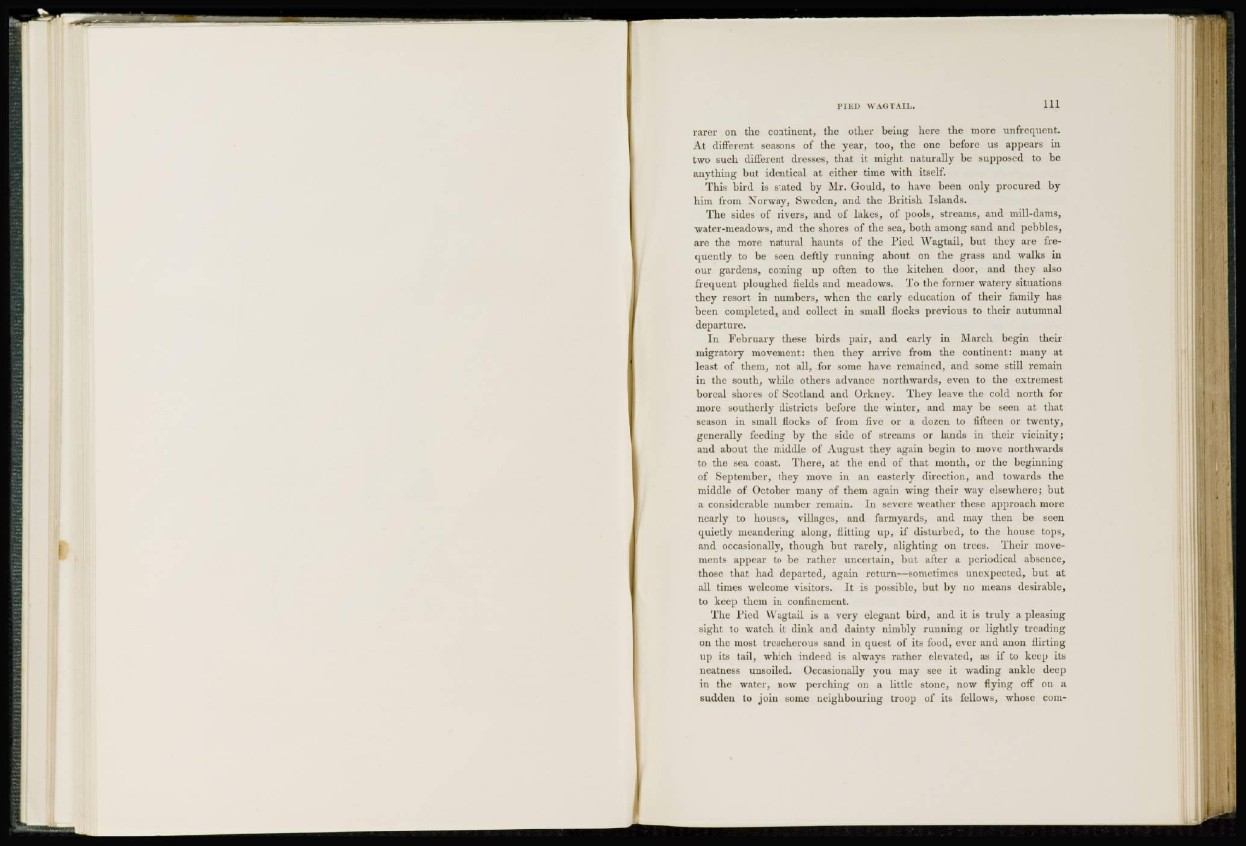
rarer on the continent, the other being here the more unfrequent.
At different seasons of the year, too, the one before us appears in
two such different dresses, that it might naturally be supposed to be
anything but identical at either time with itself.
This bird is stated by Mr. Gould, to have been only procured by
him from Norway, Sweden, and the British Islands.
The sides of rivers, and of lakes, of pools, streams, and mill-dams,
water-meadows, and the shores of the sea, both among sand and pebbles,
are the more natural haunts of the Pied Wagtail, but they are frequently
to be seen deftly running about on the grass and walks in
our gardens, coming up often to the kitchen door, and they also
frequent ploughed fields and meadows. To the former watery situations
they resort in numbers, when the early education of their family has
been completed, and collect in small flocks previous to their autumnal
departure.
In February these birds pair, and early in March begin their
migratory movement: then they arrive from the continent: many at
least of them, not all, for some have remained, and some still remain
in the south, while others advance northwards, even to the extremest
boreal shores of Scotland and Orkney. They leave the cold north for
more southerly districts before the winter, and may be seen at that
season in small flocks of from five or a dozen to fifteen or twenty,
generally feeding by the side of streams or lands in their vicinity;
and about the middle of August they again begin to move northwards
to the sea coast. There, at the end of that month, or the beginning
of September, they move in an easterly direction, and towards the
middle of October many of them again wing their way elsewhere; but
a considerable number remain. In severe weather these approach more
nearly to houses, villages, and farmyards, and may then be seen
quietly meandering along, flitting up, if disturbed, to the house tops,
and occasionally, though but rarely, alighting on trees. Their movements
appear to be rather uncertain, but after a periodical absence,
those that had departed, again return—sometimes unexpected, but at
all times welcome visitors. It is possible, but by no means desirable,
to keep them in confinement.
The Pied Wagtail is a very elegant bird, and it is truly a pleasing
sight to watch it dink and dainty nimbly running or lightly treading
on the most treacherous sand in quest of its food, ever and anon flirting
up its tail, which indeed is always rather elevated, as if to keep its
neatness unsoiled. Occasionally you may see it wading ankle deep
in the water, now perching on a little stone, now flying off on a
sudden to join some neighbouring troop of its fellows, whose com